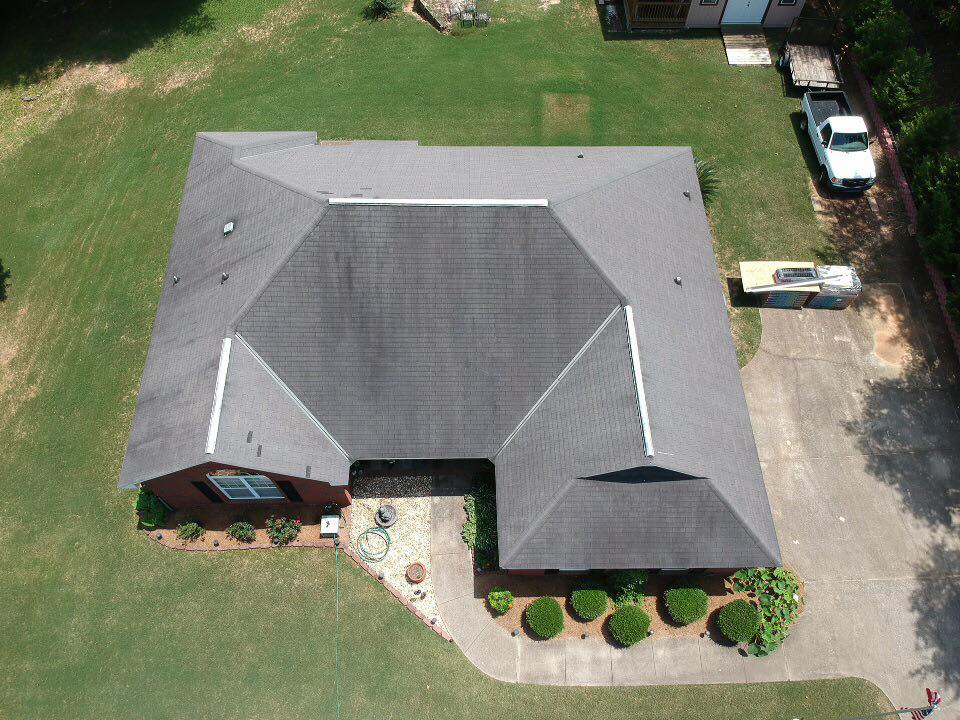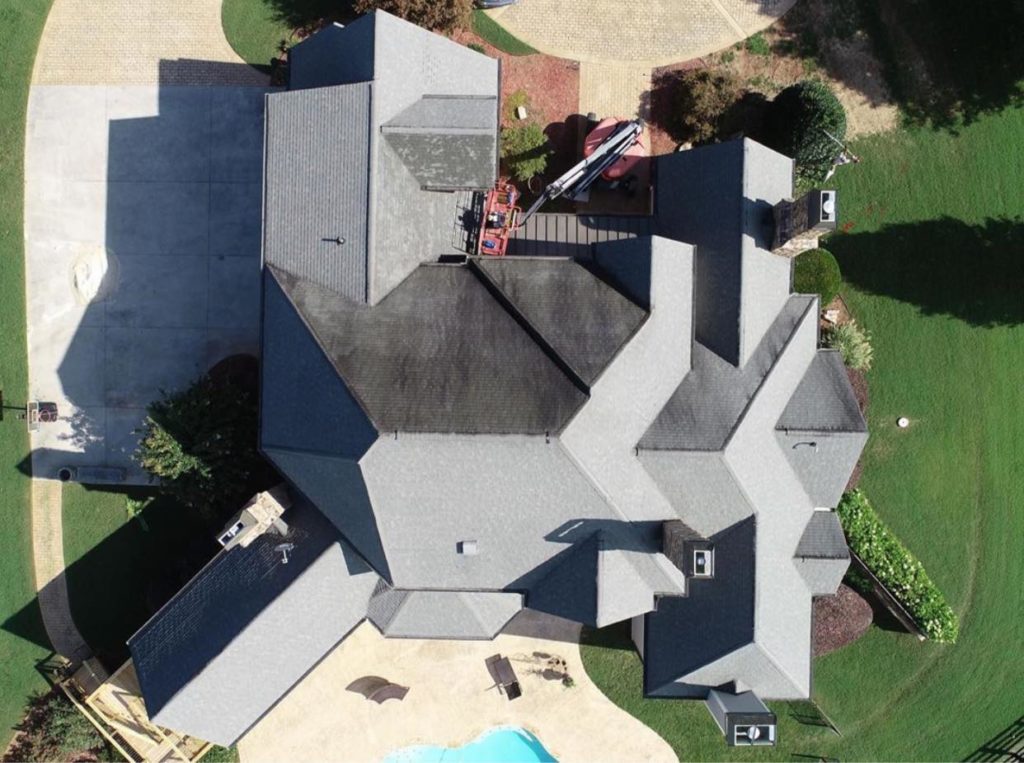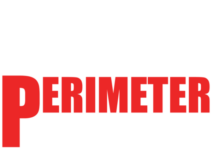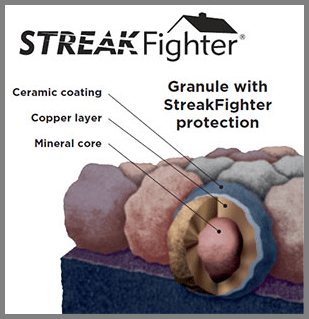If you’re a homeowner, you’ve probably noticed those long black stains on your roof or a neighborhood’s. This discoloration makes your roof shingles look wet in certain places. Untreated, these streaks can become long and unsightly, detracting from your curb appeal. But you don’t have to leave these roof stains to grow and spread; there is a way to clean your roof and prevent these stains in the future. Read below to learn all about black roof stains and the black algae that causes them.

What Are Those Black Streaks on Your Roof?
Although the stains look like dark mold or even soot, black roof streaks are actually a black algae called Gloecapsa Magma. It is an airborne algae that flourishes in dark, moist areas like the northern side of your roof. Because this black algae needs a humid environment to grow, black roof stains are very common in the hot, wet summers of the Southeastern United States. That’s why, in states like Georgia and Tennessee, many homeowners complain of black stains on their roof. Black algae is especially common on asphalt roofs because it feeds on minerals inside asphalt shingles, spreading more quickly with plenty of nutrients.
All this means that your GA or TN home is more likely to have roof stains. Especially because most homes in these areas are made of asphalt and experience high temperatures and humidity. But you do have options to help prevent and solve this problem.

Are Black Stains on the Roof Bad?
Roof stains caused by black algae are mostly an aesthetic problem. This means, although they can hurt your curb appeal, they are unlikely to cause any lasting damage to the integrity of your roof. However, if the black streaks go untreated for years, the algae will begin to wear down the surface of your roof shingles. This is because the algae causes a higher moisture retention rate on the roof, allowing other forms of mold and lichen to grow. The combination of moisture and vegetation growth will dramatically reduce the lifespan of your roof. This is because it causes a breakdown of the UV protection elements of your shingles and gets in between them.
How to Remove Roof Stains
A good roof cleaning is the best remedy for black roof stains. The main points you want to focus on when finding the best way to clean your roof include:
- Avoid high pressure washing systems. These can damage your shingles, either by removing their protective coating or pulling them up from your roof surface.
- Look for the right mild detergent to clean your roof. You want a solution you can dilute with water. This cleaner should also not have chemicals that will be rough on your shingles or hurt your landscaping with roof run-off.
- Make sure your roof cleaning solution has results that will last at least two years. You want to find a solution that needs minimal upkeep instead of yearly maintenance.
Cleaning off black algae is a project that you can complete yourself, but it is tedious and dangerous. If you want to try for DIY, check out this article from Bob Villa. Or you can contact a professional roofing company to clean your roof. They have the correct products, methods, and safety measures to ensure you get a quality roof cleaning that will last.
How to Prevent Black Streaks on Roofs
Unfortunately, once black streaks start on your roof, they are difficult to stop. It becomes a matter of preventative maintenance in trying to keep them at a minimum. For this, many roofers suggest galvanized flashing at the top of your roof. This prevents algae growth when rain mixes with the metal particles and runs down the roof.
Better than galvanized flashing, the best way to prevent roof stains from black algae is algae-resistant shingles. We recommend Certainteed’s Streakfighter® Shingles. They are made with copper granules which have natural algae-resistant qualities. These granules are released over time to provide your home with long lasting algae prevention, keeping those black streaks off your roof.
Contact Perimeter Roofing
If you want to get rid of the black stains on your roof, contact your local roofing experts at Perimeter Roofing. We are happy to explain your options for roof cleaning or give you a quote on roof replacement with algae resistant shingles. Visit our roof repair page to learn more about how we can care for your roof or fill out the form below.

